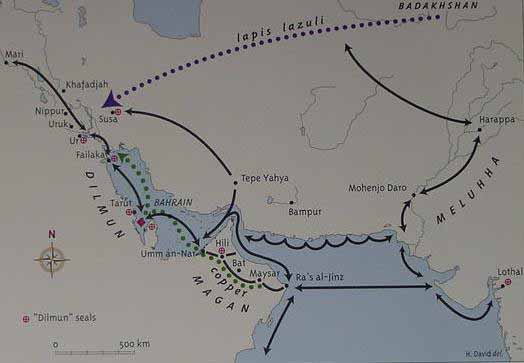al-Hasani
ELITE MEMBER

- Joined
- Feb 1, 2013
- Messages
- 14,036
- Reaction score
- 43
- Country
- Location
Thier logic like atatwolfs logic when he said kerkuk is Turkmen and ignored the native
Al kurdi claim that they have lived in Anatolia and the Armenians are immgrants from the Balkans he didn't ask him self where his people came from
On their kurdish forum they claim that the Assyrians are immgrants from Arabian peninsula and they forgot that the Assyrians lived their before them and also and they forgot that they came like dogs after the Assyrians
Yes, Atatwolf is hilarious. Recently he claimed that coffee originates in Turkey despite no coffee beans growing natively in Turkey and despite the fact that coffee reached Turkey/Ottoman Empire through the Arabs. The coffee plant originated in the highlands of Ethiopia thousands of years ago but was quickly spread to the highlands of Southern Arabia (modern day Yemen and Southwestern KSA). In fact some 800 years ago or so Yemen Sufis started to brew the coffee beans and thus invented coffee.
History of coffee - Wikipedia, the free encyclopedia
They claim to be related with anyone in the region so they can claim their heritage and say that they are as native as the locals. In reality Kurds are just the mountain version of the Qashqai people. A multiethnic federation that absorbed all kind of people but with 1 main language that became dominating over time. Many Kurds probably have Assyrian ancestry as well without knowing it. Armenian too. Dispute murdering them during and after WW1 in enormous numbers.
Well, it is said that Semites originate on the Arabian Peninsula (Akkadians, Babylonians, Assyrians etc.) but even the Sumerians who spoke a language isolate wrote in their Epic of Gilgamesh that their mythical homeland was Dilmun which is in nearby Eastern Arabia.
To this day modern-day Southern Iraqis, people from the Eastern Province of KSA (Hasawis) and Bahrainis are very close genetic wise and almost identical. Very similar appearance and culture. It has been said that Marsh Arabs are the closest descendants to the Sumerians.
For instance there is zero difference between people of Basra, Samawah, Zubayr and those living across the border in KSA.
BMC Evolutionary Biology | Full text | In search of the genetic footprints of Sumerians: a survey of Y-chromosome and mtDNA variation in the Marsh Arabs of Iraq.
"Dilmun is regarded as one of the oldest ancient civilizations in the Middle East.[10][11] The Sumerians described Dilmun as a paradise garden in the Epic of Gilgamesh.[12] The Sumerian tale of the garden paradise of Dilmun may have been an inspiration for the Garden of Eden story.[12]"
Dilmun - Wikipedia, the free encyclopedia
The Dilmun civilization was an important trading centre[14] which at the height of its power controlled the Persian Gulf trading routes.[14] The Sumerians regarded Dilmun as holy land.[15] Dilmun is regarded as one of the oldest ancient civilizations in the Middle East.[16][17] The Sumerians described Dilmun as a paradise garden in the Epic of Gilgamesh.[18] The Sumerian tale of the garden paradise of Dilmun may have been an inspiration for the Garden of Eden story.[18] Dilmun appears first in Sumeriancuneiform clay tablets dated to the end of fourth millennium BC, found in the temple of goddess Inanna, in the city of Uruk. The adjective "Dilmun" is used to describe a type of axe and one specific official; in addition there are lists of rations of wool issued to people connected with Dilmun.[19]
Pre-Islamic Arabia - Wikipedia, the free encyclopedia
However, some scholars such as Piotr Michalowski and Gerd Steiner, contest the idea of a Proto-Euphratean language or one substrate language. It has been suggested by them and others, that the Sumerian language was originally that of the hunter and fisher peoples, who lived in the marshland and the Eastern Arabia littoral region, and were part of the Arabian bifacial culture.[10] Reliable historical records begin much later; there are none in Sumer of any kind that have been dated before Enmebaragesi (c. 26th century BCE). Professor Juris Zarins believes the Sumerians were settled along the coast of Eastern Arabia, today's Persian Gulf region, before it flooded at the end of the Ice Age.[11] Sumerian literature speaks of their homeland being Dilmun.
Sumer - Wikipedia, the free encyclopedia
Based on the geographic proximity between Southern Iraq and Eastern Arabia, the extensive writings of the Sumerians themselves about Dilmun, modern-day DNA tests by the people etc. it is very clear that the connection is big. Let alone the fact that we know that the Arabian Peninsula was inhabited before other areas of the ME were inhabited.

The so called ahwazis and the arab of the eastern coast are lying donkeys like the kurds
These ahwazis are like the kurds who say Assyrians are immgrants from the Arabian peninsula
These dogs live on iranian land and they claim that they are the natives and the native people of the land are immgrants
The region historical name is khuseztan and its mentioned in history books by the arab historians it was never arabistan they try to fabricate like the kurds in Syria claim that ras al ayin is sirikanya and it was changed by the regime while ras al ayin historically was called ras al ayin
The natives are Elamites but they are long extinct. Arabs have lived in those regions long before pre-Islamic times Salman. After all it is a stone throw from Iraq and the Arabian Peninsula and a long way from the remaining parts of Iran. I am 100% sure that Iranian Arabs have more to do with Elamites than a Farsi living in Mashhad 2000 km away near Turkmenistan and Afghanistan. No doubt about it.





